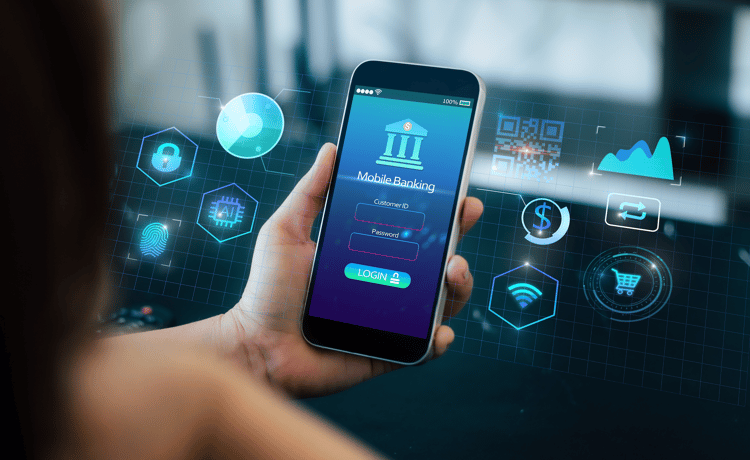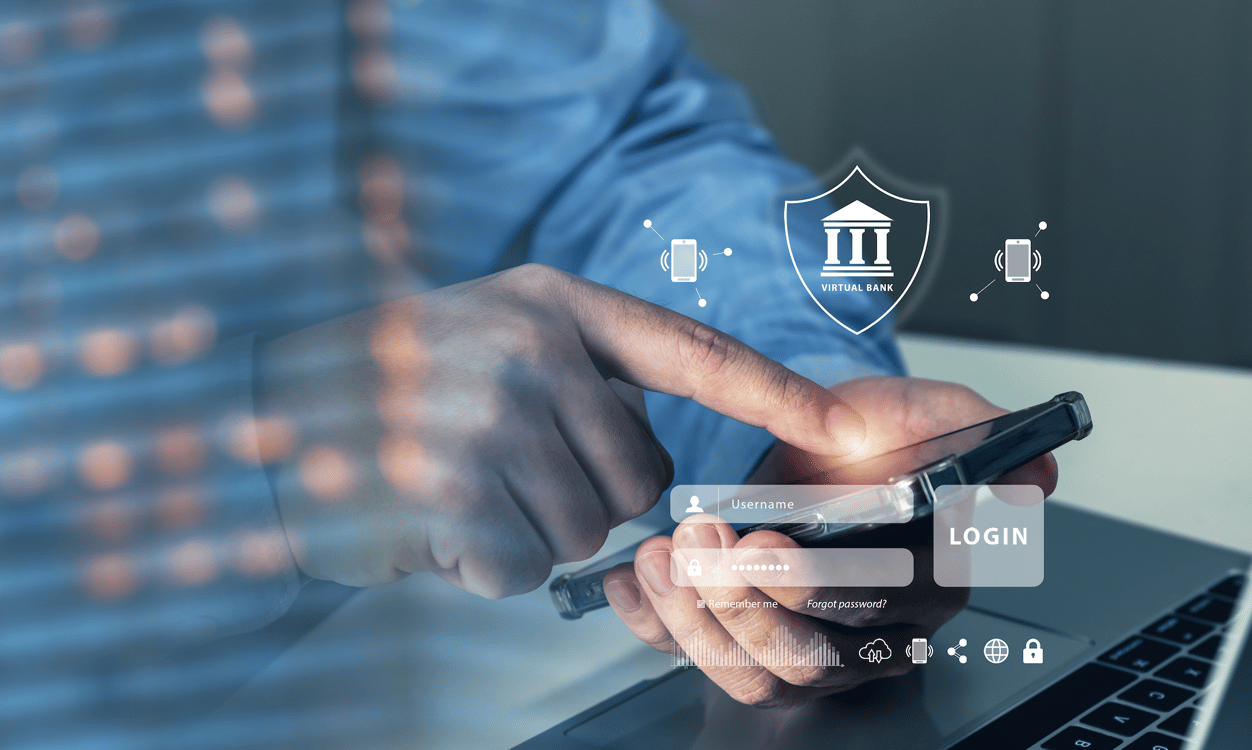Mobile wallet technology: The ultimate guide

Mobile wallets have revolutionized the way we handle money, transforming smartphones into digital versions of traditional wallets. As customers move their credit and debit cards to their cell phones, financial institutions not offering a digital payment method are challenged to keep up.
This guide will equip you with essential knowledge about mobile wallet technology: including what it is, how it works, and the security measures to keep your data safe.
What is the technology behind digital wallets?
The technology that powers digital wallets is a combination of software and hardware components that work together to ensure secure and seamless transactions. By leveraging these technologies, digital wallets create a secure and convenient payment experience, allowing consumers to make transactions with just a tap or scan of their mobile devices.
Here are the key technologies involved:
- Near field communication (NFC): This wireless data transfer method lets your phone and the payment terminal communicate when they're close together. It's quick, convenient, and the standard for many mobile wallets.
- Quick response (QR) codes: Some digital wallets use QR codes for transactions. The wallet generates a unique QR code representing the transaction details, which the payment terminal scans to process the payment.
- Host card emulation (HCE): This software architecture emulates a payment card on a mobile device. HCE allows the wallet app to transmit payment information to the terminal over NFC, even when the device's screen is locked.
- Tokenization: This security technology replaces sensitive card details with unique identification symbols, or tokens. These tokens protect your information and they're useless if intercepted by fraudsters. The original card details are stored securely in cloud servers.
- Biometric authentication: To add another layer of security, many mobile wallets use biometric data, like fingerprints or facial recognition, to verify the user's identity before authorizing a transaction.

How does a mobile wallet work?
At its core, a mobile wallet is a software application that stores payment information on a mobile device. To make a purchase, the mobile wallet communicates with payment terminals through NFC. Here's how it works:
- First, you add your credit or debit card information to the mobile wallet app. This includes the card number, expiration date, and CVV code. The app then encrypts this information for secure storage.
- When you're ready to make a purchase, you bring your mobile device near a payment terminal that supports NFC.
- The terminal and your device communicate wirelessly to exchange payment information.
- Once the transaction is approved, your mobile wallet app sends a confirmation, and the transaction is complete.
It's worth noting that while NFC is a common method, some mobile wallets also use QR codes or barcodes for payment. Regardless of the method used, mobile wallet technology simplifies the payment process, offering a quick, seamless, and secure way to handle transactions and accept payments from your customers.
Types of Mobile Wallets
There are essentially three types of mobile wallets, each offering unique features and catering to different user preferences.
- Closed wallets: These are wallets offered by businesses to customers for exclusive use on their specific platforms. These wallets contain the money that is returned from cancellations. Prominent examples include Amazon Pay and Walmart Pay.
- Semi-closed wallets: These wallets are similar to closed wallets but with slightly more flexibility. They allow users to transact with multiple merchants who have a specific contract with the wallet issuer. Examples include wallets like PayPal and Venmo, which can be used with a wide variety of online retailers but still have certain limitations.
- Open wallets: Open wallets are those which, in addition to the functionality of semi-closed wallets, allow users to withdraw cash and even transact with all possible merchants with no limitations. These wallets are typically issued by banks or have specific partnerships with them. Google Pay and Apple Pay are examples of open wallets.
Each type of wallet has its own benefits and drawbacks. Closed wallets can offer loyalty points and rewards, but limit where you can spend your money. Semi-closed wallets offer more flexibility but still have some restrictions. Open wallets provide the most flexibility, but their wide usage can make them a target for fraud.

The difference between a digital wallet and mobile wallet
While the terms "digital wallet" and "mobile wallet" are often used interchangeably, they do have distinct differences that you should keep in mind when deciding what to offer your customers.
Digital wallet
A digital wallet is a broad term that refers to an electronic device or online service that allows an individual to make electronic transactions. This can include purchasing items online with a computer or using a smartphone to purchase something at a store.
Essentially, digital wallet is an umbrella term for all kinds of electronic wallet services, whether they are accessed on a desktop, laptop, or mobile device. Examples of digital wallets include PayPal, which can be accessed and used on various devices.
Mobile wallet
On the other hand, a mobile wallet is a type of digital wallet that is specifically designed to be used on mobile devices, like smartphones and tablets. It's a virtual wallet that stores payment card information on mobile devices.
To make purchases, customers can pay with their tablets, smartwatches, or smartphones. Examples of mobile wallets include services like Apple Pay and Google Pay, which require a mobile device to operate.

The benefits of mobile wallets
For banks
- Enhanced customer experience: By integrating mobile wallet technology, banks can offer their customers the convenience of carrying out transactions anytime, anywhere. This can significantly improve the overall banking experience.
- Customer retention: Offering cutting-edge mobile wallet features can serve as a key differentiator, helping banks retain existing customers and attract new ones in an increasingly competitive market.
- Lower operational costs: Mobile wallets can reduce the need for physical infrastructure and personnel for transactions, thus lowering operational costs. They also minimize the risks and costs associated with handling cash.
- Better security: Mobile wallets provide robust security features like tokenization and biometrics, which can lessen the risk of fraud. This not only protects customers but also reduces the liability of the bank for fraudulent transactions.
For customers
Mobile wallet technology offers numerous benefits for customers to have an improved shopping experience.
- Simplicity: Mobile wallets streamline the payment process. With a few taps on the screen, users can complete transactions quickly and efficiently.
- Convenience: No need for physical wallets or plastic cards. Everything is stored on your mobile device, which most customers carry with them at all times.
- Security: Advanced security measures like encryption, tokenization, and biometric authentication make mobile wallets a safer option than traditional, physical wallets.
- Improved tracking: Digital receipts and automatic record-keeping features make it easier to track expenses and manage budgets.
- Exclusive promotions: Many mobile wallets offer exclusive deals, discounts, and loyalty points, providing extra value for users.
- Speed: Mobile wallets offer faster transactions than traditional card payments or cash, especially when using contactless payment technology.
- Reduced contact: In the wake of the pandemic, contactless payments have become more crucial than ever. Mobile wallets allow users to make payments without touching cash or card terminals, reducing the risk of viral transmission.

How safe are mobile wallets?
Mobile wallets are considered to be extremely secure, often more so than traditional physical wallets. They use advanced security measures such as encryption, tokenization, and biometric authentication to protect user information.
Encryption technology converts the user's personal and financial information into a code, preventing unauthorized access. Tokenization technology replaces the user's account number with a unique digital identifier or token. This token is used during the transaction, meaning your actual account number is never exposed, reducing the risk of it being intercepted or stolen.
Mobile wallets use biometric authentication (like fingerprints or facial recognition) to verify the user's identity before a transaction is authorized. This ensures that even if a device is lost or stolen, unauthorized users cannot make purchases.
In addition to these measures, if a mobile device is lost or stolen, a user can often remotely lock or erase their mobile wallet. This is a measure that simply can't be taken with a traditional wallet.

How banks & financial institutions can use mobile wallet technology
Banks and financial institutions have a significant opportunity to capitalize on mobile wallet technology to deliver enhanced, customer-centric services.
New product development
Mobile wallet technology can open the door for banks to innovate and introduce new financial products. By understanding customer spending habits and preferences, banks can develop personalized financial products that cater to specific customer needs.
Loyalty programs
Banks can leverage mobile wallet technology to offer tailored loyalty programs. By analyzing the spending patterns and preferences of customers, banks can offer personalized rewards, further enhancing customer engagement.
Data insights
Mobile wallets generate a wealth of data that can be used for analytics. These insights can be invaluable for banks to understand customer behavior, enhance their services, and make data-driven decisions.
Mobile loans
Banks can leverage mobile wallets to offer instant micro-loans. A customer's transaction history can assist in assessing their creditworthiness, enabling quick loan approvals.
Insurance products
Banks can use mobile wallet technology to offer tailored insurance products. For example, travel insurance could be offered to customers who frequently purchase airline tickets through their mobile wallets.
Investment platforms
Banks can integrate investment platforms into mobile wallets, allowing customers to buy, sell, or manage investments directly from their mobile devices. This feature serves to provide customers with an all-in-one financial management tool.
Cross-selling
Mobile wallets can be utilized for cross-selling other financial services. Notifications or advertisements about these services can be integrated into the mobile wallet interface, driving customer awareness and potential uptake.
Digital currencies
Given the increasing interest in cryptocurrencies, banks can integrate digital currency wallets into their mobile wallet offerings. This service could allow customers to make transactions or investments using cryptocurrencies, adding an extra dimension to their banking experience.
Develop a digital wallet program with E6
By embracing mobile wallet technology, financial institutions can stay ahead in the digital age, meeting customer expectations while driving operational efficiency. At Episode 6, we offer card tokenization and token management for cards issued on our digital wallet platform so you can provide secure, easy payments at your customers’ fingertips. Contact us today to explore your options.

E6 Team
About the Author
Episode Six provides financial institutions with solutions for legacy payment stacks that aren’t fulfilling the needs of an expanding industry. We are a global provider of enterprise-grade payment technology and ledger management infrastructure for banks that need to keep pace with disruptors and evolving consumer preferences.

